Amongst the great many things the experiences of the last couple of years have brought to the fore, and have unequivocally reinforced, is the importance to humans, collectively and individually, of outdoor spaces; not just for fresh air, movement, relaxation and physical well-being, but also for mental well-being.
With Garden Futures. Designing with Nature the Vitra Design Museum, Weil am Rhein, explore the garden as such an outdoor space, and also as a cultural space, as a design space, as a social space, as a political space and in doing so allow for reflections and considerations on not only gardens but humanity's wider relationships with the natural world.......

In a great many religions and cultures gardens exist as a symbol of a perfection, as a paradise; and in the monotheistic religions the garden, that paradise, is the presumed cradle of humanity, that Garden of Eden, that Jannah, in which the first humans arose.1 And although in those monotheistic traditions, with time, things in that garden go very, very, badly wrong, the start in that first garden is very, very good.
As an exhibtion Garden Futures. Designing with Nature also starts in paradise, or more accurately with the chapter Paradise, a chapter that approaches the concept of the garden, the garden as a concept, from numerous perspectives, including via a multi-media presentation of garden Dreams and Ideals from across ages and cultures featuring images of, for example, the oases of the Middle East, Zen Japanese gardens or their formal juxtapose in the ostentatious, decadent, gardens of Baroque France, alongside thoughts on the garden by the likes of, and amongst others, Luis Barragán, Nadine Olonetzky or Michel Foucault; and also via a presentation of a selection of garden chairs, examples, as the curators note, of the shift over time from parks to gardens, from public spaces to private spaces, from communal benches to individual chairs. Individual garden chairs such as, for example, Aino Aalto's 1938/39 garden lounger which as a re-imagined gardener's flatbed wheelbarrow is a joyously Surrealist position from a designer more lauded for her, for want of a better phrase, rationalism; Loop by Willy Guhl for Eternit from 1954, which in its curving, looping, fibrous cement not only predicts the organic forms of 1960s and 70s plastic furniture, but convincingly argues that unlike the argument made by the so-called Forrest chairs, those green-painted Windsor chairs of the 18th century that, arguably, mark the earliest garden chairs, and, possibly, the earliest Windsors, chairs don't have to be "natural", or make direct reference to nature, to be suitable for the garden; or a 1949 Samsonite All-Metal Folding Armchair by Russel Wright which reminds us all that today private gardens aren't necessarily always the large expanses private gardens once were, and that a degree of flexibility, versatility and temporality is regularly associated with, demanded for, their use. And reminding that a degree of mobility is required and demanded when your garden is a public park.
And an opening chapter that also presents what is referred to as A Taxonomy of Tools, a presentation of apparently banal implements and aids associated with gardens and gardening which on the one hand remind us that gardens are not only wild nature in miniature, but are also agriculture in miniature, that for all gardens are places of relaxation they are often also spaces to be worked, often at a measurable economic scale, certainly relative to the income of the owner, as we all remember from the irony inherent in the importance of the vegetable plots in an Émile Zola's La Terre. And which on the other hand is a taxonomy that allows insights into how such apparently banal implements and aids with very limited and specific functionalities, functionalities that in most cases have been solved since their earliest incarnations, have still evolved and developed over time to become, for example, more practical, more responsive, more user-friendly, more durable, cheaper, etc, than those earliest incarnations. Which is of course part of that what design is, what design should be, an evolution of existing solutions.
A presentation of apparently banal implements and aids that includes examples of fencing which remind that gardens have long been enclosed spaces, fences either delineating gardens from the real nature/agriculture they seek to imitate and copy, and/or fences marking boundaries of ownership, that demonstration of how much of the earth we individually own that humanity is so particularly partial to making; of shears and secateurs which remind that for all gardens are natural environments, it's not a nature allowed to grow naturally but one which we shape and form and control, forge into our image, or as Jean-Jacques Rousseau's Julie d’Étanges expounds on her carefully manicured wilderness garden, "Il est vrai, dit-elle, que la nature a tout fait, mais sous ma direction", It is true that nature has made everything, but under my direction.2 Or a collection of scythes which very much reminds of Enzo Mari, a man who once staged an exhibition entirely of scythes3, a man who understood scythes not only as symbolic of what design should be but as a near metaphor for the progression of human civilisation, including the chronic malaise of contemporary human civilisation. And a man who also once, ¿regularly?, opined that design students should spend a semester working as farmers to learn about what is really important.
Thus fences, shears, secateurs, scythes, et al, and garden chairs and dreams and ideals which not only allow one to approach a garden as a design environment as much as a natural environment, but could also allow one to consider a garden as a political position.
And which if you did, would be a good foundation for moving on to Garden Futures' second chapter, Garden Politics.
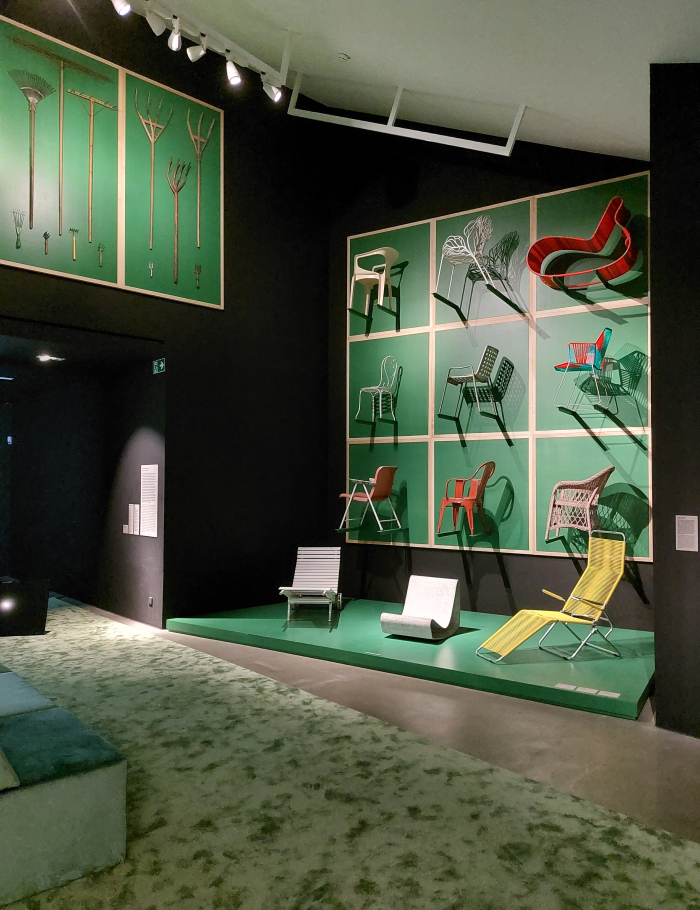
A chapter less of arguments with your neighbours over dogs, barbecues, low-hanging branches and trampolines, and more a chapter of six succinct showcases discussing various aspects of gardens in context of the social, cultural, technological et al contexts which underscore, support and define any society and community.
Six succinct showcases which cover, for example, and amongst other subjects: gardens and colonialism in context of the so-called Wardian Case, a transportable terrarium developed in the 19th century for the purpose of transporting living plants from European colonies to Europe and which not only played an important role in the transport of non-native plant species to Europe with all the consequences that has had for the native European flora and fauna, and also for the plants' native regions through the destruction invariably wrought by the colonisers, but also stands proxy for the violations of colonialism, the ongoing violations of colonialism, while also inconveniently reminding you that your pretty garden may have a brutal, ugly, criminal past; gardens and urban planning, with its primary focus on the Garden City as an early 20th century response to the problems of late-19th century urban realities, for all the horrors of late-19th century housing, and which not only became physical realities, as Garden Futures notes, in many locations and variations, but a Garden City concept that is also a key component of the 22nd century London of a William Morris's 1890 utopian novel News from Nowhere, a central role that helps elucidate how the Garden City concept developed from late 19th century Socialist thinking and as a counterweight to the industrialisation of the age. Or gardens and activism as explored for all through the practice of Guerilla Gardening, that planting of flowers, grass, vegetables et al where public authorities and private individuals never envisaged gardens to be, of us all creating our own flecks of green in the urban jungle; and which through the 1975 Greenpaper, a form of manifesto, by the New York City based Green Guerillas collective and its opening suggestion to "plant a windowbox full of seeds, flowers and vegetables", brings you back to the aforementioned Willy Guhl, who, as we all learned from Thinking with your Hands at the Museum für Gestaltung, Zürich, used to surreptitiously plant radish seeds in the window boxes of Zürich on his ways through the city, an attempt by Guhl to encourage healthier eating and more home grown foods. But being Guhl not undertaken in a dogmatic, confrontational fashion but as a voluntary suggestion. And because it amused him. And which arguably makes Willy Guhl the Urvater of Guerilla Gardening in Switzerland. And potentially the Urvater of Guerilla Gardening.

Reflections and considerations of gardens as social, cultural, technological, public, private, guerilla, political locations, as more than just plants and trees and water features, continued and greatly expanded upon, in the chapter Testing Grounds, a chapter which introduces nine gardeners, garden activists, from across the past century or so, and for all introduces a myriad varied and varying garden projects by the nine from across the past century or so; projects which, as the curators opine, don't so much represent the "miniature worlds or idyllic escapes" normally associated with gardens, but rather represent "prototypes of hope", which is a very nicely, and very, very, satisfyingly, worded distinction. Prototypes of hope including, for example, the Tokachi Millennium Forest on the Japanese island of Hokkaido instigated by the the media tycoon Mitsushige Hayashi with the aim of not only preserving and maintaining the native habitat but also offsetting the carbon footprint of Hayashi's newspaper empire, and a garden thus designed with a long-term perspective, namely the 1000 years of its name; the garden of author and journalist Jamaica Kincaid in Vermont in which, and through which, Kincaid reflects on questions of colonisation, displacement and appropriation, not least in context of the (hi)story of her native Antigua and the wider Caribbean; the garden at Prospect Cottage in Dungeness, England, established in the late 1980s by the artist Derek Jarman in and on apparently infertile shingle, in the shadow of a nuclear power station, and mercilessly buffeted by the sea winds, and a garden in which Jarman not only dealt with his own HIV diagnosis and impending death, but created a space which in its survival and flourishing against all the odds became a place of inspiration and comfort for a great many. Then and now.
Or the projects and publications and research of the Dutch landscape gardener Mien Ruys, a protagonist of a greater democratisation of gardens and gardening, of making gardening and gardens accessible and attractive and available and affordable for all. And a creative who started her active career in the atmosphere of inter-War Dutch Modernism, who was involved with and interacted with groups such as the so-called Delftse School of architects with their focus on a rational simplicity and harmony and also with the slightly more radical, if every bit as reduced, user-orientated and socially aware, architecture groups De 8 and Opbouw. And thus a link to inter-War Modernism enabled by Ruys which reminds us that in context of Inter-war Modernist architecture and urban planning projects gardens were often much more important then than is popularly appreciated today: gardens and spatial planning playing a central role in projects such as, for example, and amongst many others, the Siedlerbewegung in early 1920s Vienna, the Neues Frankfurt project from the mid-1920s, or the numerous estates a Bruno Taut developed in Berlin in the first decades of the 20th century.
And gardens and green spaces which continued to play a central role post-War in Modernist influenced projects by the likes of, for example, an Arne Jacobsen, an architect who wanted to be a gardener and as Garden Futures allows one to better appreciate, arguably was, or a Mien Ruys, including, for example, Ruys' contribution to the Havikshorst housing estate in Amsterdam or the expansion of the town of Nagele in/on Noordoostpolder, the latter a project that also saw contributions from the likes of, for example, Aldo van Eyck, Gerrit Rietveld or Mart Stam. And an influence which can also be followed post-War in the earliest phases of the new town of Eisenhüttenstadt on the extreme eastern edge of the contemporary Germany with its expansive green spaces freely accessible by all. Before in its latter phases Eisenhüttenstadt became an impenetrable high-rise forest shrouded in toxic smog....... there's that Paradise garden going wrong again.......
Modernist positions on gardens and urban planning that, in many regards, arose in context of, and were informed and influenced by, the Garden City approach and its arguments for greater access to gardens and green spaces; reflections on Modernist gardens in context of the Garden City concept enabled by Garden Futures that allow one to appreciate that the importance of green spaces on collective and individual mental and physical health, the benefit of being able to relax in fresh green spaces, the importance of access to green spaces that the Covid pandemic caused us all to appreciate, was known, valued and practised generations ago. Before it became lost, ¿sacrificed?, in the tribulations of post-War urban planning.
And also became lost, ¿sacrificed?, in the rapidity of post-War urban growth. And the associated inflation of land prices with its consequences for housing. A state of affairs very neatly underscored in Garden Futures through the presence of the project Kebun-Kebun Bangsar in Kuala Lumpur, a community garden established by activists which in addition to being an accessible green space in a very full, very busy, very noisy, city, is also a site of food production, that age old function of gardens and one which still offers that which it always has, food security. An important contemporary topic. And, arguably, an even more important future topic.
One of a great many topics of importance in and for the future of not just our cities and societies, but the future of our planet.
The future of that earthly garden from which we've, not yet, been banished.
But are very much on our final warning.

A well-paced, accessible and readily comprehensible exhibition which through its mix of objects, photographs, films, plans et al, and concise bilingual German/English texts, very neatly and very satisfyingly tackles the problem of presenting a subject encountered at the physical scale of the garden at the much more reduced museul scale, a presentation format that notably, ¿deliberately?, doesn't include a single plant, but is extensively and luxuriously carpeted, an unusual, but not unpleasantly so, experience in a museum, and one that does give the impression of being on a pristine lawn, Garden Futures effortlessly allows for expanded and differentiated understandings of gardens and gardening, of gardens as more than just miniaturised and controlled nature, of gardens as more than just flowers and plants and trees and water features and trampolines, but of gardens, as with interiors, as places of experimentation with new positions and ideas, of gardens as documenters, chroniclers, annalists of cultures and communities, of gardens as microcosms of contemporary society, of gardens as mirrors of contemporary society, including gardens as mirrors of the inequality, inequalities, of global society: the rich own gardens, the poor work in those gardens, the rich own the "miniature worlds or idyllic escapes" in which the poor work, much as over centuries the rich have owned farmland which is worked by the poor, while the pristine lawns of the type on which you appear to glide through Garden Futures were once, as we learn from a Virginia Woolf, the sole preserve of wealthy men, women being chased from them by agitated Beadles.4
An inequality, a social inequality, that is that other aspect the Covid years brought to the fore and reinforced: not just the inequalities that meant some were better able to protect themselves from the risks than others, but the fact that those who had a garden were in a much better position than those who didn't, than those who had to rely on whatever public green spaces were available. Assuming any were. And who needs a garden chair if you don't have a garden? A thought arising in Garden Futures' opening chapter and echoed every spring in every advert for garden furniture for the coming garden season, including the one from the 1960s for Henry Massonnet's STAMP Monoblocs that features in Garden Futures, a Monobloc, a garden chair, that today for a great many globally is their only indoor chair. And a thought that reminds that the Paradise of the opening chapter's title is and was relative and restricted; that over the centuries of human civilisation for the greater many the tools of work on display in Paradise were more relevant than the chairs of relaxation, which, yes, could bring one back to an Enzo Mari. Arguably must bring one back to an Enzo Mari. Or a William Morris.
Yet an inequality, a social inequality, that Garden Futures allows one to appreciate gardens have not only long reflected, but also long offered a path to a solution to, have long been a solution to, something that in the course of the 20th century became lost, ¿sacrificed?, but which, slowly but surely, is being rediscovered, relearnt, a process Garden Futures contributes to and which in doing so allows one to better appreciate that a path to a brighter future for all could be understanding not just heavenly Paradise as a garden, nor only understanding our planet as a garden, but also understanding our societies as a garden, our communities as a garden, and to appreciate that as with any garden the manner in which we treat it influences its health, its vitality, its agency and ultimately its affect on our physical and mental well-being.

Thoughts and considerations very much brought to the fore and reinforced in Garden Futures' final chapter.
A final chapter physically dominated by the textile installation Meadow by Alexandra Kehayoglou, an expansive woven and tufted work inspired by, and based on, the wild flower meadows of the Greek island of Milos; and a woven textile meadow, a contemporary take on the representation, celebration, honouring of the oasis to be found in traditional Middle Eastern carpets, visitors are very much invited to enter, to relax on and to reflect within. As if it were an actual meadow. Albeit an actual meadow in a museum. Which if we're not careful is soon the only place we may find meadows. Along with the trees in a tree museum a Joni Mitchell has long warned us about. And which has been our unshakeable earworm since visiting Garden Futures.
And a final chapter conceptually dominated by the so-called Garden of Ideas, a fleeting introduction to some 23 global projects and positions which, for the curators, represent interesting and informative future-orientated garden concepts, future-orientated social concepts inspired and informed by gardens and gardening: possibilities, chances, for the future of human societies and communities and our planet.
Projects and proposals including, for example, the application of urban planning strategies which considers non-human animals as much as human animals, which remind us that we're not alone in our garden; Tolou Keur in Senegal, a circular food forest instigated as part of the so-called Great Green Wall, a project seeking to create a mosaic of new green spaces across the African continent by way of resisting desertification on the edges of the Sahel; the Rijnvliet Edible Neighbourhood near Utrecht with its 150,000 m urban food forest freely available for local residents as a green space and as a pantry of some 200 edible plants; the retro-fitted winter gardens that are such a key component of the French architects Lacaton, Vassal, Druot & Hutin's transformations, renovations, recycling of 1960s high-rises and which in many regards give back to the residents a connection with nature and a space for greenery 1960s urban planners took from them; the Edible Estates initiative in Edinburgh supporting a network of community gardening groups which not only help green the housing estates of the city and develop and support communities but also provide healthy food; or the Chinampas, floating gardens, of Mexico, an approach used by the Aztecs and Chinampas which as Jamaica Kincaid notes in her 1992 essay Flowers of Evil, an essay on colonialism, control, power and gardening that can be read in Garden Futures, were one of things the Spanish conquerors witnessed when they first arrived in Mexico. And then destroyed. And replaced with their own systems. Like the colonists they were.
Projects and proposals which in a great many regards are about deconstructing the fences that traditionally surround gardens, metaphorically and physically, a deconstruction that can be traced in Garden Futures back through the inter-War Modernists to the Garden City protagonists; are about moving, metaphorically and physically, from the individual garden chair back to the communal bench, a tackling of the excesses of the individual ego that, arguably, is at the root of humanity's banishing from that first Paradise and our threatened banishing from its earthly successor; are very much about expanding the tools available for gardening through introducing and advancing conceptual tools, conceptual tools which, as with the physical tools featured in the opening chapter, can, should, must, be continually evolved and developed to improve their use, efficiency and agency; are very much about understanding gardening beyond the need to control and optimise and harness and monetise and posses nature, and to understand gardening as a collaboration with nature, to appreciate the importance of collaborating with nature. Of designing with nature, not designing nature. And to extrapolate that understanding into wider contexts.
Projects and proposals which echo the understanding of the garden as a political position implied in the opening chapter, but with an increased confidence not only of the validity but of the necessity of that understanding, and also approached from a different perspective, from a much more empowered, less passive, perspective.
Projects and proposals which should, must, be viewed and considered in context of the examples of the rights awarded to nature, and the attempts to award rights to nature, discussed on the other side of Kehayoglou's Hellenic meadow including, for example, the rights awarded the Whanganui river in New Zealand, the unsuccessful attempt by activists in Chile to enshrine a legal standing for nature in the constitution or attempts by German activists to have Ecocide declared a crime.
Projects and proposals that while not all exactly the fully expounded "prototypes of hope" encountered earlier in Garden Futures, represent, or could represent, components of a working model of hope.
Projects and proposals which help underscore that the status quo isn't inevitable, we can change it, but that change can only occur if we all act. If we all become gardeners. Gardeners working together for a universal, tangible, terrestrial, Paradise worthy of the name.
Garden Futures. Designing with Nature is scheduled to run at the Vitra Design Museum, Charles-Eames-Str. 2, 79576 Weil am Rhein until Tuesday October 3rd.
Full information, including information on opening times, ticket prices, current hygiene rules and the accompanying fringe programme can be found at www.design-museum.de/garden-futures
In addition a richly illustrated catalogue featuring interviews and essays is also available.


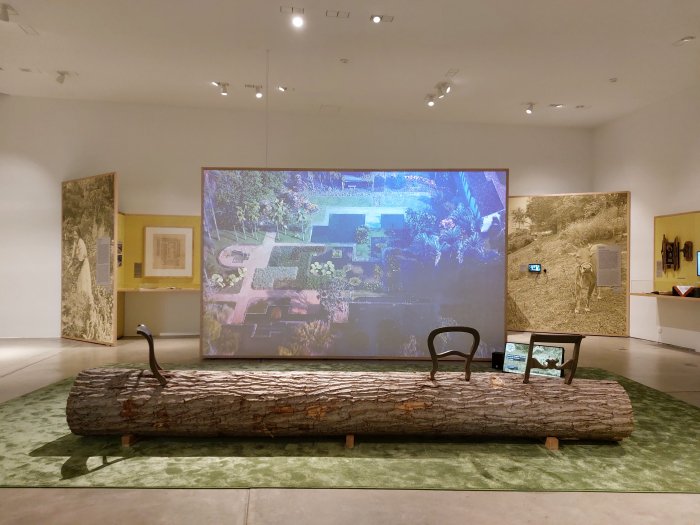
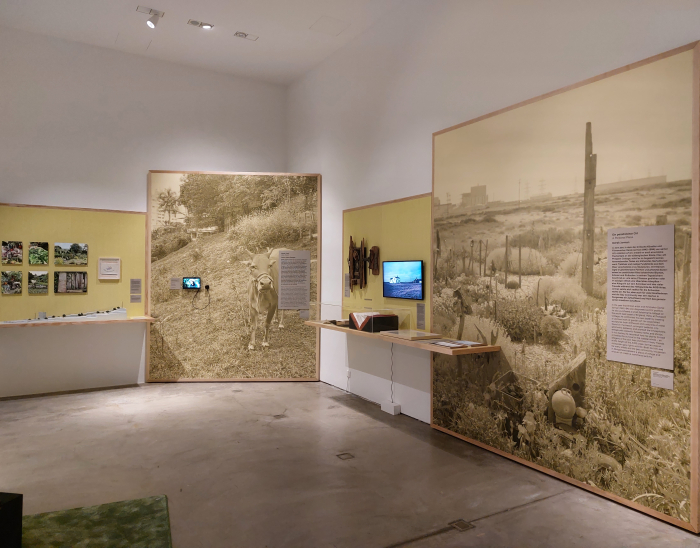
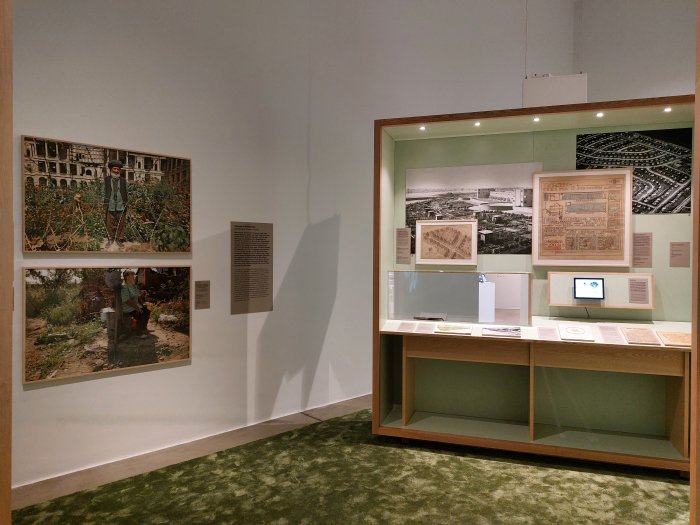
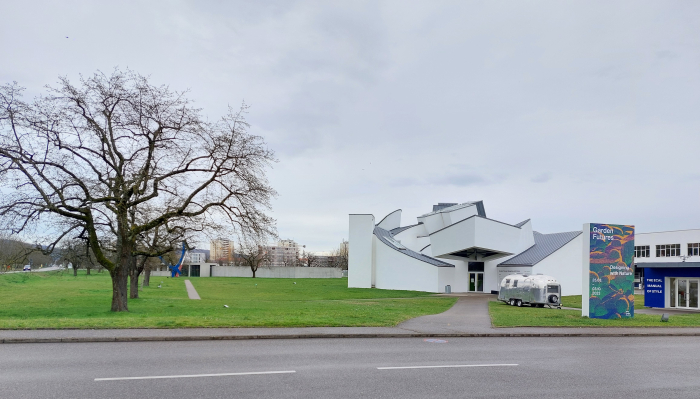

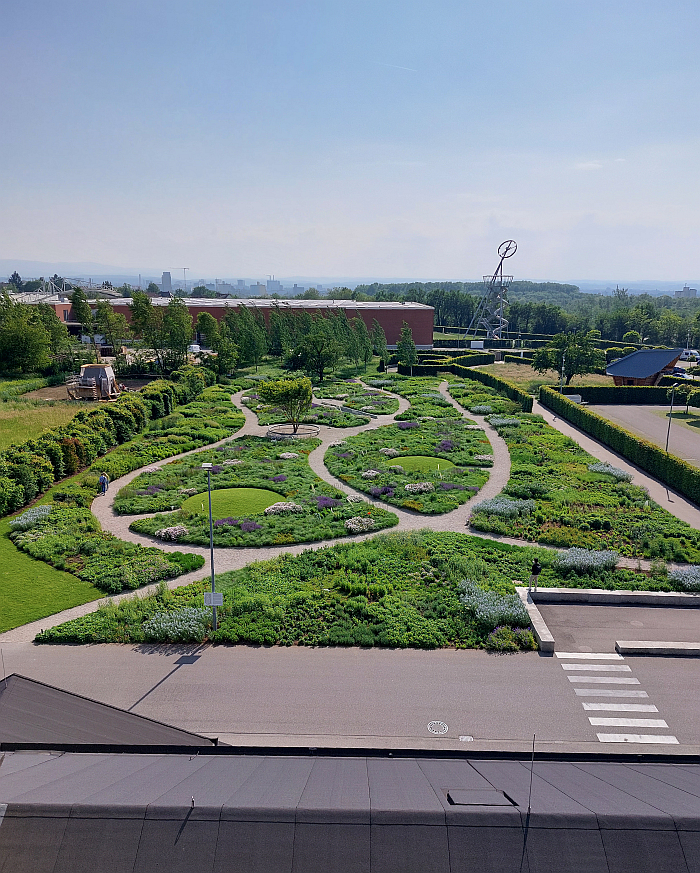
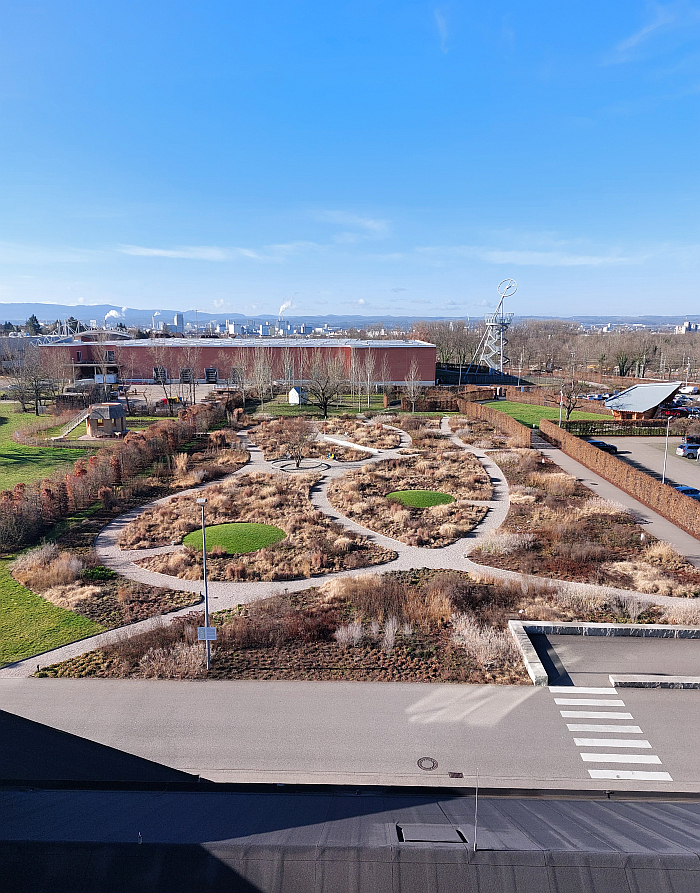
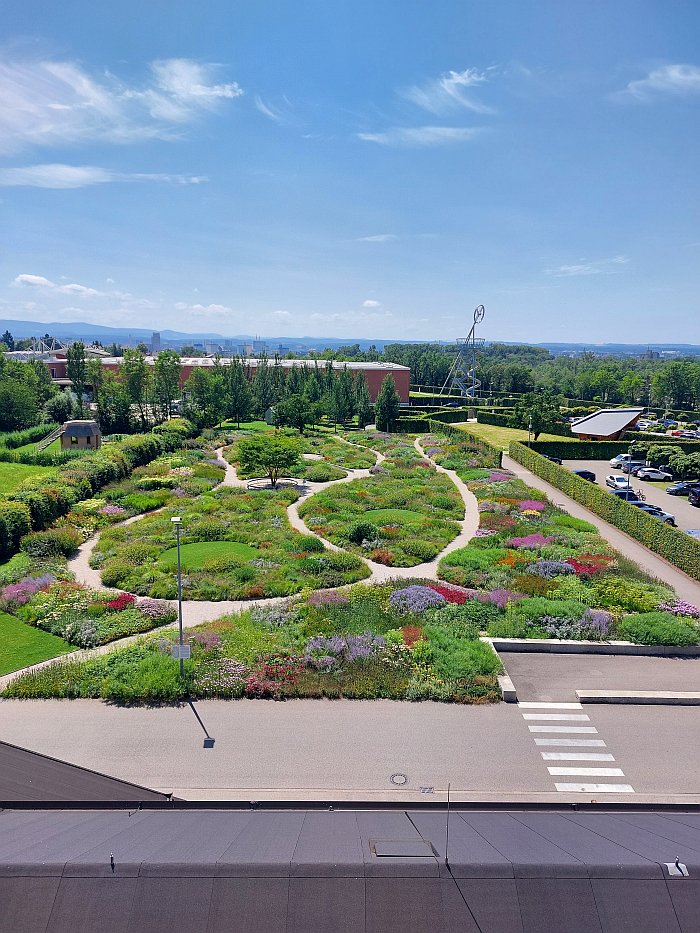
1We're not entirely convinced we're correct with our assertions relating to Jannah, there are several interpretations. However, we believe it is one that can be made, there is certainly an expulsion from Jannah as a consequence of a transgression, and so for rhetoric purposes we make it. But it may not be entirely accurate, don't quote us on it.......
2Jean-Jacques Rousseau, Julie ou la Nouvelle Héloïse, first published 1761, Here from Part Four, Letter XI (Our translation)
3Enzo Mari, Perchè una mostra di falci? Why an exhibition of scythes? Danese Milano, September 1989
4see Virginia Woolf, A Room of One's Own, 1929